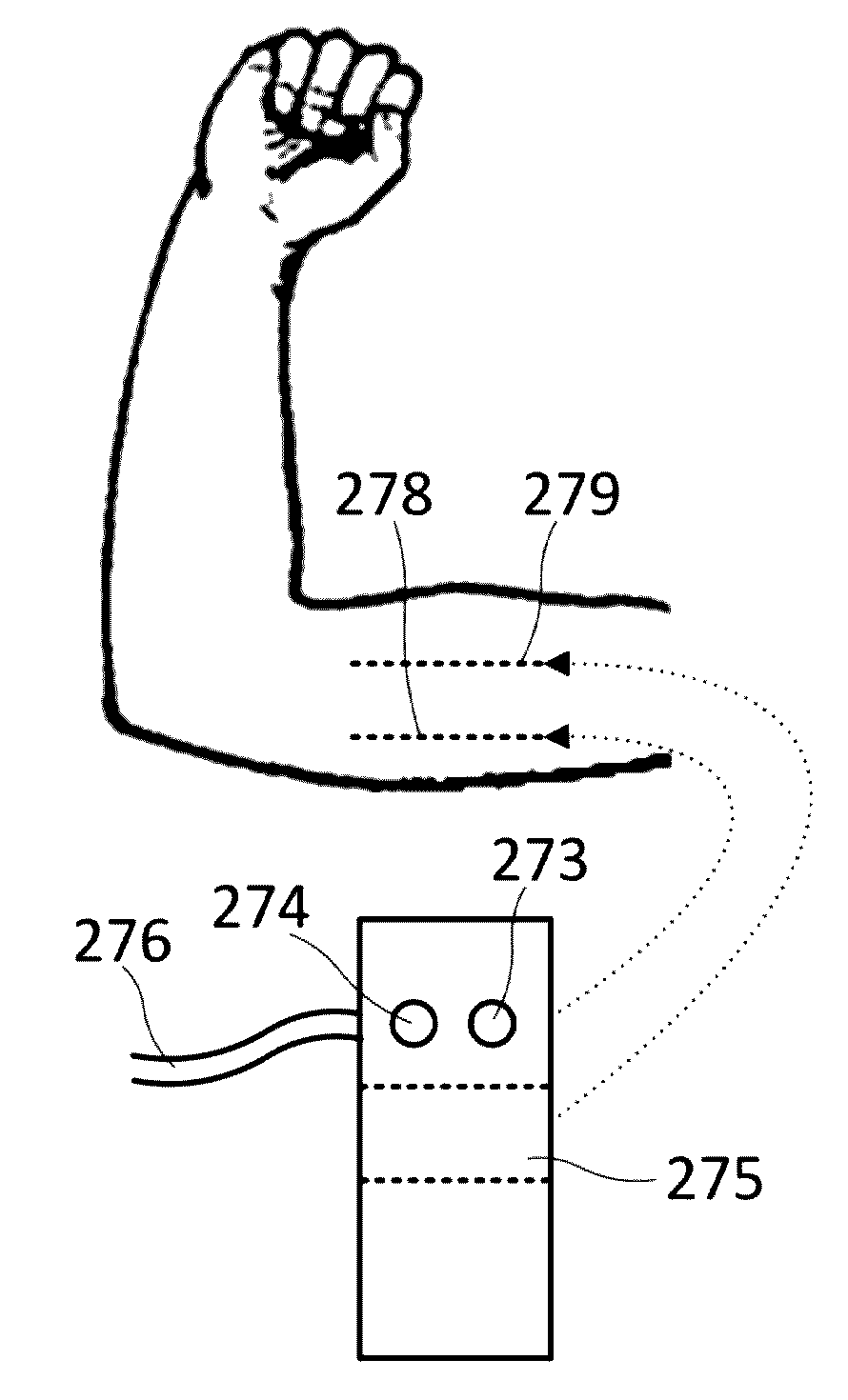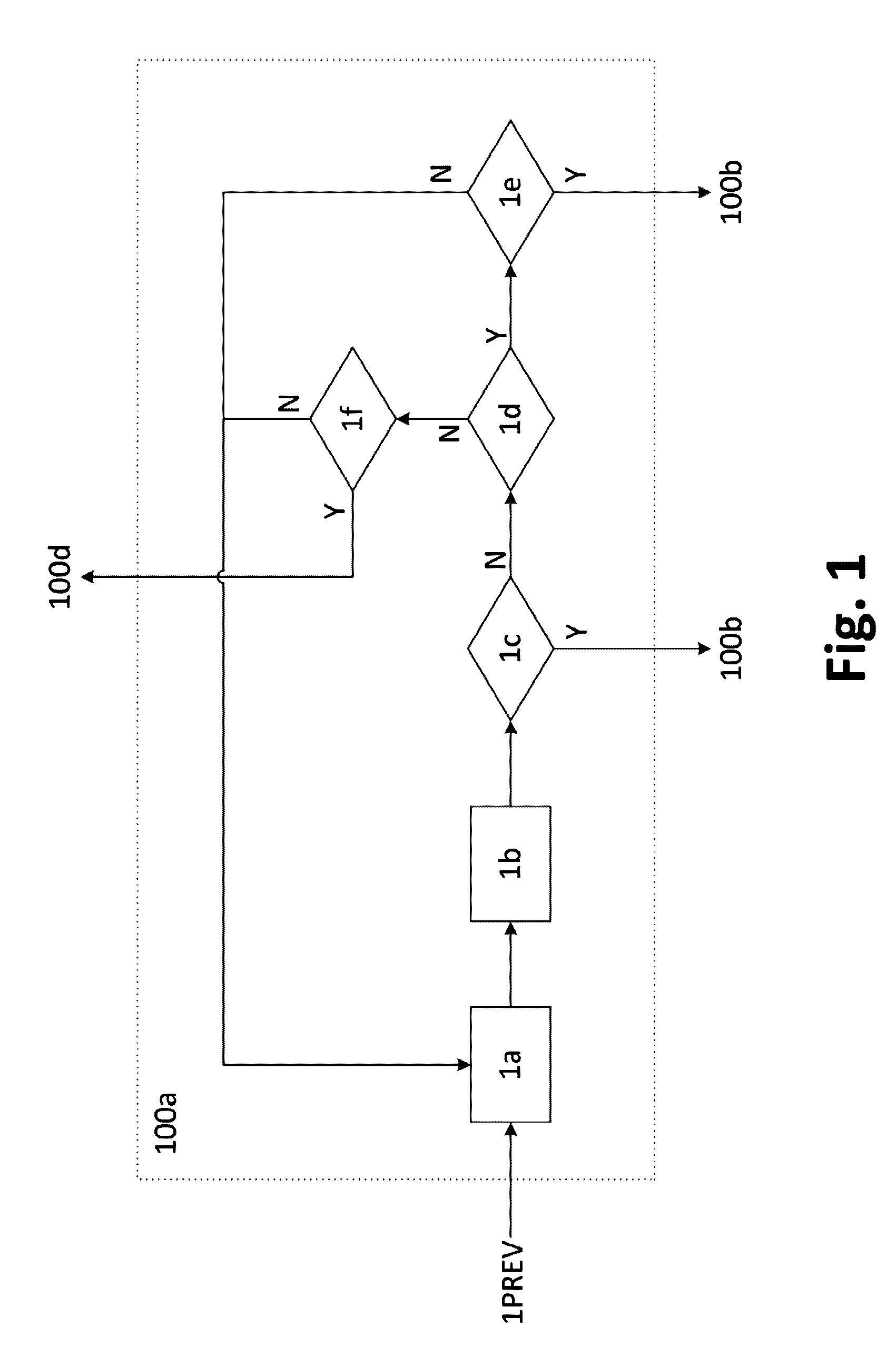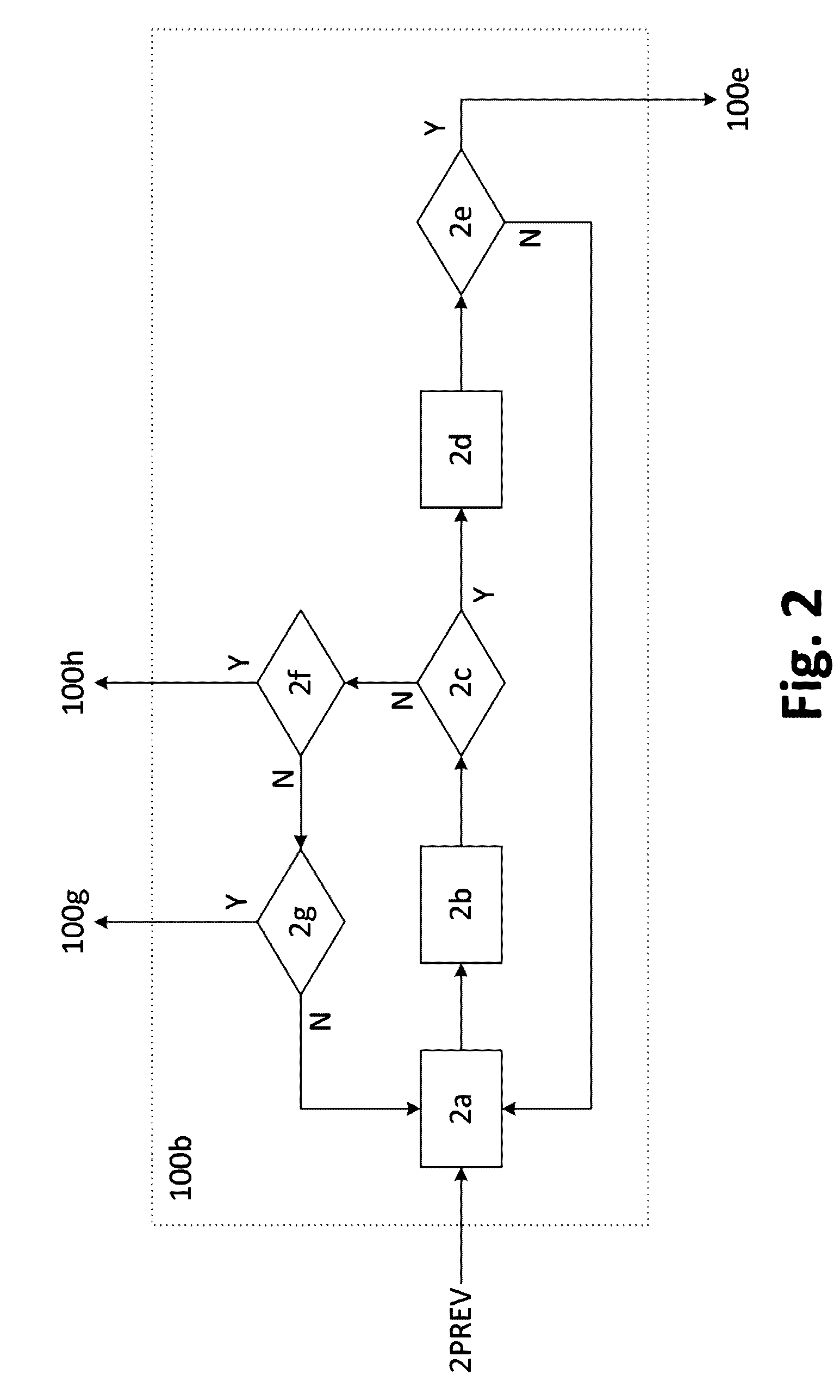Monitoring a neuromuscular blockade status
a neuromuscular blockade and status technology, applied in the field of determining the status of neuromuscular blockade, can solve the problems of cumbersome system use, time-consuming system setup, discomfort of the surgical team, etc., and achieve the effect of stimulating the nerve, easy scaling up, and easy adhesion
- Summary
- Abstract
- Description
- Claims
- Application Information
AI Technical Summary
Benefits of technology
Problems solved by technology
Method used
Image
Examples
Embodiment Construction
[0174]FIGS. 1 to 8 are flow charts schematically illustrating automatic transitions between statuses in the context of methods for automated determination of a neuromuscular blockade status for a patient. During surgery, depending on the circumstances, the neuromuscular transmission may be blocked by delivering a muscle relaxant to the patient and said blockade may be reverted by delivering to the patient a drug aimed at that end.
[0175]Methods are based on having predefined a plurality of neuromuscular blockade statuses, each having predefined one or more stimulation cycles with a cycle periodicity and one or more criterions for changing the neuromuscular blockade status to another neuromuscular blockade status.
[0176]Examples of predefined neuromuscular statuses may be e.g. induction status, moderate status, deep status, intense status, reversion status, and end-of-reversion status. Unblocked status may be a “fictitious” status indicating that some ending condition has arisen, which...
PUM
 Login to View More
Login to View More Abstract
Description
Claims
Application Information
 Login to View More
Login to View More - R&D
- Intellectual Property
- Life Sciences
- Materials
- Tech Scout
- Unparalleled Data Quality
- Higher Quality Content
- 60% Fewer Hallucinations
Browse by: Latest US Patents, China's latest patents, Technical Efficacy Thesaurus, Application Domain, Technology Topic, Popular Technical Reports.
© 2025 PatSnap. All rights reserved.Legal|Privacy policy|Modern Slavery Act Transparency Statement|Sitemap|About US| Contact US: help@patsnap.com



